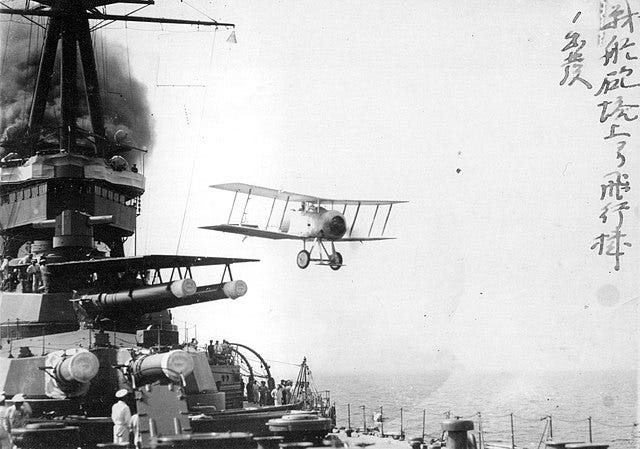
After last week’s post,
my wife’s comment was, “Great story, but I don’t understand how it ties into your scholarship.” Welp…I’m going to tell you, but first I need to get a bit smarter on two topics: (1) Japanese domestic politics of the 1920s; and (2) the Japanese Imperial Navy, the U.S. Navy, and navies generally, because far be it from me to oversell my argument or not provide you with scholarly citations.
That means I need to get a bit further along in this ugly book:
(again, great book, just ugly book cover), and also read the following:
Takashi Inoguchi, “The Wilsonian Moment: Japan 1912-1952,” Japanese Journal of Political Science (2018), 19, 565–570.
John H. Maurer, “David Lloyd George and the American Naval Challenge: Great Britain and the Washington Naval Conference,” Diplomacy & Statecraft (2021), Vol. 32, No. 2, 310-329.
A few chapters out of The Washington Conference, 1921-22: East Asian Stability and the Road to Pearl Harbor, Erik Goldstein et. al., eds.
Kobayashi Tatsuo, “The London Naval Treaty,” translated by Arthur E. Tiedemann, in Japan Erupts: The London Naval Conference and the Manchurian Incident, 1928-32, James William Morley, ed.
Prelude to Pearl Harbor: The United States Navy and the Far East, 1921-31 by Gerald E. Wheeler.
(Hopefully, by then I’ll understand the difference between a “capital ship,” a “cruiser,” what this 10:10:6 ratio was all about and why the Imperial Japanese Navy was so upset about it. Like I said before, I’m an Army person. I really hope I don’t have to break down and read Arthur Thayer Mahan in order to understand what the heck is going on here. But I will if I have to).
I’m at least going to watch this, since I can’t figure out what everyone is arguing about at this 1921-22 Washington Naval Conference, much less the 1927 Geneva Naval Conference or the 1930 London Naval Conference:
Then I’ll read:
The Turning Point in US-Japan Relations: Hanihara’s Cherry Blossom Diplomacy in 1920-1930, by Misuzu Hanihara Chow and Kiyofuku Chuma (I just found this book 2 days ago at the AU Library).
Revolution Goes East: Imperial Japan and Soviet Communism, by Tatiana Linkhoeva (available for free here—thank you, Penny!)
Finally, I probably also need to get just a bit smarter on the U.S. Immigration Act of 1924 and then read Nancy Stalker, “Suicide, boycotts and embracing Tagore: The Japanese popular response to the 1924 US Immigration Exclusion Law,” Japanese Studies, 2006-2009, Vol. 26(2), p. 153-170. I think Tagore is an Indian author, which is kind of interesting.
Do I also have to learn something about U.S.-China relations in the 1920s? Probably.
Stay tuned!





